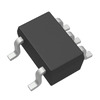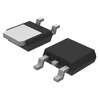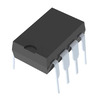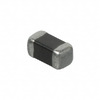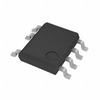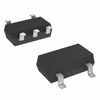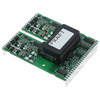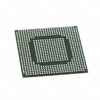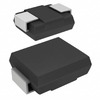M3914 vs. LM3915 vs. LM3916: Key Differences Explained
Integrated circuits like the LM3914, LM3915, and LM3916 are ultimate in the creation of visual display applications, mostly for bar graphs or dot displays that illustrate voltage or audio levels. Known for their adaptability and precision, these circuits serve a wide range of applications, from straightforward voltage displays to more complex audio visualization systems. This article provides an in-depth exploration of these ICs, examining each circuit's unique features, operational characteristics, and practical applications. By understanding the distinct traits of each IC, you can make informed choices to meet specific visual display requirements in various fields.Catalog
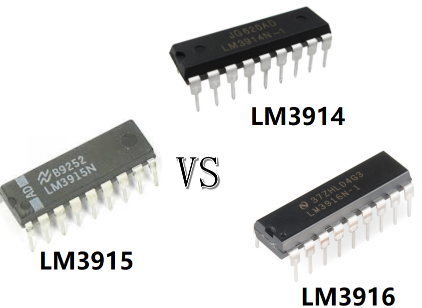
LM3914 Overview
The LM3914 is an intriguing integrated circuit crafted for creating linear analog voltage displays with up to ten LEDs. What sets it apart is its capacity for emotion, mostly in its singular control pin, which deftly toggles between dot and bar display modes, adapting to diverse display demands seamlessly. This aspect brings a sense of satisfaction to those who value adaptability in design. Its engineering brilliance shines through its inherent capability to maintain a stable and adjustable LED current without needing extra current-limiting resistors, something that reflects its clever design philosophy.
Operating efficiently in a creative dance of compactness and performance from a humble starting voltage of 3V, the LM3914 shines as a beacon of simplicity and effectiveness. It demands minimal external components, invoking relief for those who dread complex setups—requiring just one resistor to calibrate the full-scale reading. Its operational range stretches from 0°C to +70°C, offering resilience and dependability across varying environmental factors, which assures you in climates both mild and extreme. Housed in an 18-lead PDIP package, it presents practicality, mostly in straightforward analog metering endeavors.
In pragmatic scenarios, you can find comfort in the LM3914’s intuitive setup and uncomplicated assembly. This attribute is mostly used in situations where speedy deployment of voltage display systems is desired, allowing for immediate satisfaction and accomplishment. You can cherish the unwavering reliability of its LED current control, allowing it to reduce design intricacies while amplifying the effectiveness of electronic systems. Incorporating the LM3914 facilitates the creation of analog displays that are not only compact and reliable but also economically viable.
LM3915 Overview
The LM3915 is widely recognized for creating displays with a 3 dB incremental scale, providing control over ten individual visual indicators such as LEDs or LCDs. An appealing characteristic is its effortless switch between bar and dot display modes, facilitated by a straightforward pin setup. This not only enhances usability but also reduces reliance on additional components like current limiting resistors, due to its programmable current regulation capability. Operating effectively across a power supply range of 3V to 25V, the circuit exhibits adaptability, is capable of driving an array of outputs including various types of LEDs and LCDs, and can easily adjust to diverse visual display applications.
Utilizing the LM3915 is straightforward, as it requires minimal external components—typically just one resistor for calibration. This feature ensures its performance remains unaffected by supply voltage changes, highlighting its versatility in various monitoring tasks. In practical applications, you can often appreciate that incorporating the LM3915 into existing systems enhances both functionality and dependability. These advantages are notably pronounced in situations demanding dynamic visual data representation, thereby ensuring effective communication of information.
LM3916 Overview
The LM3916 is celebrated for offering a straightforward design, enabling support for up to ten LEDs to achieve full-scale metering with minimal additional components. This attribute facilitates reduced design complexity and lowers costs in diverse applications. By incorporating a single potentiometer, you have the flexibility to seamlessly adjust LED brightness, accommodating varying ambient light conditions and individual preferences. Such adaptability is advantageous in projects where constraints on time and resources are factors that might influence design decisions.
Known for its adaptability, the LM3916 is an exemplary choice for numerous display applications. Whether incorporated into audio level meters or other visual representation systems, the LM3916 consistently delivers outputs that suit a variety of display types, ensuring uniform performance and accurate readings. In practical scenarios, the option to daisy-chain multiple units facilitates increased resolution or range, adapting effortlessly to both dot and bar graph displays. This scalability becomes a sought-after feature for you who continually pursue versatile solutions to address complex system requirements.
Linking multiple LM3916 units unlocks enhanced resolution or range improvements, mostly beneficial in dot and bar display setups where precision and clarity hold substantial value. In professional domains like audio engineering or instrumentation, where actual data accuracy is serious, this capability proves valuable for obtaining detailed feedback and effective visualization.
Comparative Analysis of LM3914, LM3915, and LM3916 Characteristics
Features of LM3914
|
Feature |
Description |
|
IC Type |
Analog Controlled LED Driver |
|
Number of Controllable LEDs |
10 |
|
Operating Voltage |
3V to 18V |
|
Input Analog Voltage Range |
1.2V to 12V |
|
LED Sink Current |
2mA to 30mA (programmable) |
|
Display Modes |
Dot/Bar modes available |
|
Expandability |
Can be cascaded to control up to 100 LEDs |
|
Package Options |
Available in 18-pin DIP, PLCC |
|
Display Compatibility |
Can drive LCDs, LEDs, and vacuum fluorescents |
|
External Mode Selection |
Dot or bar display mode selectable by user externally |
|
Maximum Display Expansion |
Expandable to up to 100 displays |
Features of LM3915
|
Feature |
Description |
|
3 dB/step |
30 dB range |
|
Display Compatibility |
Drives LEDs, LCDs, or vacuum fluorescents |
|
Display Mode |
Bar or dot display mode externally selectable by the user |
|
Expandable Range |
Expandable to displays of 90 dB |
|
Internal Voltage Reference |
1.2V to 12V |
|
Operating Supply Voltage |
Operates with a single supply of 3V to 25V |
|
Input Operation |
Operates down to the ground |
|
Programmable Output Current |
1 mA to 30 mA |
|
Input Protection |
Withstands ±35V without damage or false outputs |
|
Output Characteristics |
Current regulated, open collectors |
|
Logic Compatibility |
Directly drives TTL or CMOS |
|
10-Step Divider |
Floating and can be referenced to a wide range of
voltages |
Features of LM3916
|
Feature |
Description |
|
VU Analog Display |
Provides a VU Analog Display from Analog Voltage Input |
|
Output Options |
Drives LED, LCD, or Vacuum Fluorescents |
|
Display Mode |
Bar or Dot Display Mode |
|
Expandability |
Expandable to 70dB Display |
|
Internal Voltage Reference |
Adjustable from 1.2V to 12V |
Comparative Analysis of Pinouts
Pinout of LM3914

Pinout of LM3915
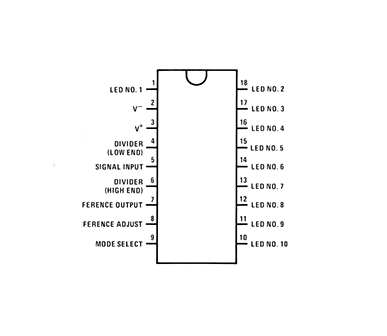
Pinout of LM3916

Block Diagrams
Structural Diagram of LM3914
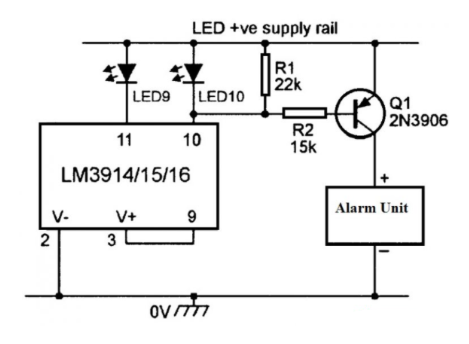
Structural Diagram of LM3915

Structural Diagram of LM3916
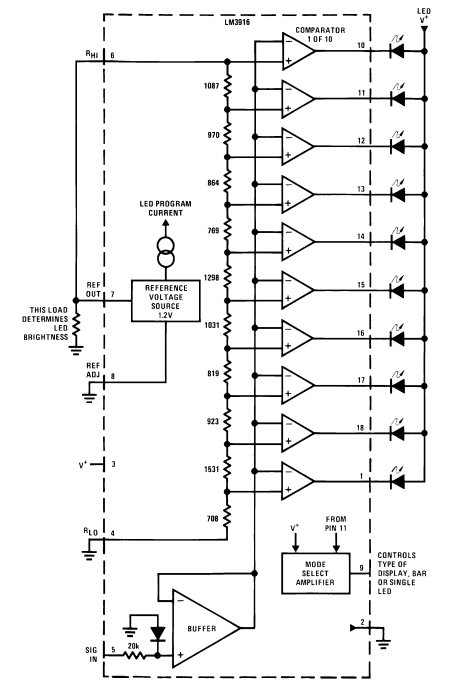
Application Scenarios for LM3914, LM3915, and LM3916
Diverse Uses of LM3914
The LM3914 finds its place in applications where visual representation and monitoring are basic, such as robotic battery indicators, automotive battery systems, temperature regulation setups, and digital gauges. Its capacity to offer precise, intuitive visual feedback makes it economically compelling for varied purposes. Through refinement, these applications are honed for greater efficiency. The presence of visual indicators in temperature control systems significantly boosts your interaction and understanding, which resonates with you who often lean toward this practical approach.
Versatile Applications of LM3915
In audio visualization and basic battery indicators, the LM3915 is often employed for its ability to create accurate and affordable displays. By expanding visual cues, it bridges technical data with accessible interfaces. You can employ audio visualizers who treasure this component for its ability to transform sound into a lively light show, demonstrating how theoretical ideas thrive when integrated into everyday tools.
Varied Implementations of LM3916
Excelling in driving diverse visual displays, the LM3916 plays a key role in designing dot/bar display drivers suited for analog voltage sensing. Its flexibility with different display formats allows for a wide array of uses. You can appreciate LM3916 for its advantage in settings requiring versatile voltage representation solutions. Such integration into displays succinctly communicates useful information, reinforcing the focus on user-centric design in technological advancements.
Equivalent Components for LM3914, LM3915, and LM3916
Equivalents to LM3914
• CD4511
• MAX7219
• CD4054
Understanding Options for Replacing LM3915
• LM3914
• CD4511
• MAX7219
• CD4054
Investigating Substitutes for LM3916
• LM3914
• CD4511
• MAX7219
• CD4054
Specifications of LM3914, LM3915, and LM3916
|
Parameter |
LM3914 |
LM3915 |
LM3916 |
|
Voltage - Supply |
3V ~ 20V |
3V ~ 25V |
3V ~ 25V |
|
Max Input Voltage |
12V |
25V |
25V |
|
Output Voltage |
1.34V |
1.28V |
17V |
|
Height |
3.3mm |
3.3mm |
4.32mm |
|
Width |
6.35mm |
6.35mm |
6.35mm |
Package
Package of LM3914

Package of LM3915

Package of LM3916
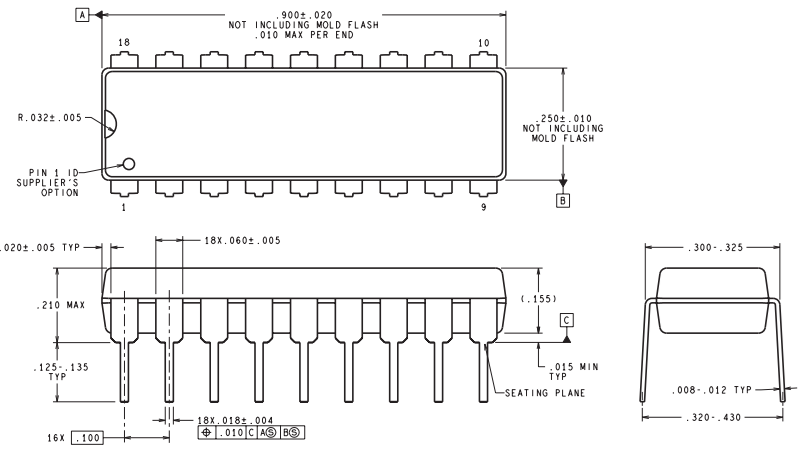
Conclusion
The LM3914, LM3915, and LM3916 ICs each offer specialized capabilities for visual display applications. From the LM3914's linear voltage representation to the LM3915's logarithmic response ideal for audio applications, and the versatile LM3916 suited for VU meter displays, these ICs cater to diverse operational needs. Mastering their use involves more than just understanding specifications; it requires adapting each circuit to actual scenarios and addressing challenges in calibration, display precision, and environmental adjustments. Whether designed for audio level monitoring, voltage metering, or versatile display setups, these ICs provide reliable and flexible solutions that support effective and intuitive interaction across a range of applications.
About us
ALLELCO LIMITED
Read more
Quick inquiry
Please send an inquiry, we will respond immediately.
Frequently Asked Questions [FAQ]
1. How do the LM3914 and LM3915 differ from one another?
These two integrated circuits, the LM3914 and LM3915, are specialized for driving LED displays, each catering to a unique operational style. The LM3914 fits perfectly for linear display configurations, while the LM3915 is tailored for logarithmic displays, a choice often seen in audio-related contexts. This difference becomes particularly meaningful when considering the distinctions of display needs and input signal characteristics.
2. What role does the LM3915 play?
The LM3915 elegantly engages LEDs in selected decibel increments guided by an analog input. It thrives in a voltage environment spanning from 3V to 25V, offering adaptability for both battery-operated and regulated systems. This adaptability makes it mostly useful in sophisticated sound-level displays, providing clarity in audio representation.
3. What is the intended use of the LM3914?
With a knack for transforming analog voltages into linear LED patterns, the LM3914 shines in scenarios needing straightforward voltage display—for instance, battery level indicators. It not only translates voltage levels into easily interpretable visuals but also enhances the interaction between you and the device, making monitoring less taxing.
4. What operational modes does the LM3914 offer?
The LM3914 gleams with versatility through its two working modes: DOT mode and BAR mode. DOT mode prioritizes energy efficiency by illuminating a singular LED-conserving power, whereas BAR mode lights up all LEDs leading to the input level, presenting a fuller visual output. The decision between these two modes hinges on the balance between power conservation and data clarity.
5. How do the LM3914, LM3915, and LM3916 compare?
Though these ICs—all tasked with LED display driving—share a common purpose, they diverge significantly in display technique and specific uses. The LM3914 stands out in linear voltage display applications; the LM3915 amplifies its role in audio monitoring through a logarithmic scale; the LM3916, known for its peak-level display abilities, is often seen in stereo systems.

1N4148 Signal Diode: Datasheet, Pinout, and Equivalents
on November 12th

Comprehensive Guide to AT24C02 Serial EEPROM
on November 12th
Popular Posts
-

What is GND in the circuit?
on January 1th 3160
-

RJ-45 Connector Guide: RJ-45 Connector Color Codes, Wiring Schemes, R-J45 Applications, RJ-45 Datasheets
on January 1th 2729
-

Understanding Power Supply Voltages in Electronics VCC, VDD, VEE, VSS, and GND
on November 17th 2344
-

Fiber Connector Types: SC Vs LC And LC Vs MTP
on January 1th 2211
-

Comparison Between DB9 and RS232
on January 1th 1829
-

What Is An LR44 Battery?
Electricity, that ubiquitous force, quietly permeates every aspect of our daily lives, from trivial gadgets to life-threatening medical equipment, it plays a silent role. However, truly grasping this energy, especially how to store and efficiently output it, is no easy task. It is against this background that this article will focus on a type of coin cell battery that may seem insignificant on the...on January 1th 1800
-

Understanding the Fundamentals:Inductance Resistance, andCapacitance
In the intricate dance of electrical engineering, a trio of fundamental elements takes center stage: inductance, resistance, and capacitance. Each bears unique traits that dictate the dynamic rhythms of electronic circuits. Here, we embark on a journey to decipher the complexities of these components, to uncover their distinct roles and practical uses within the vast electrical orchestra. Inductan...on January 1th 1756
-

CR2430 Battery Comprehensive Guide: Specifications, Applications and Comparison to CR2032 Batteries
What is CR2430 battery ?Benefits of CR2430 BatteriesNormCR2430 Battery ApplicationsCR2430 EquivalentCR2430 VS CR2032Battery CR2430 SizeWhat to look for when buying the CR2430 and equivalentsData Sheet PDFFrequently Asked Questions Batteries are the heart of small electronic devices. Among the many types available, coin cells play a crucial role, commonly found in calculators, remote controls, and ...on January 1th 1720
-

What Is RF and Why Do We Use It?
Radio Frequency (RF) technology is a key part of modern wireless communication, enabling data transmission over long distances without physical connections. This article delves into the basics of RF, explaining how electromagnetic radiation (EMR) makes RF communication possible. We will explore the principles of EMR, the creation and control of RF signals, and their wide-ranging uses. The article ...on January 1th 1709
-

Comprehensive guide to hFE in transistors
Transistors are crucial components in modern electronic devices, enabling signal amplification and control. This article delves into the knowledge surrounding hFE, including how to select a transistor's hFE value, how to find hFE, and the gain of different types of transistors. Through our exploration of hFE, we gain a deeper understanding of how transistors work and their role in electronic circu...on November 17th 1678
